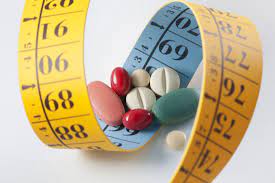You may wonder what side effects to expect and how to deal with them since you are getting ready for the first or second dose of your COVID-19 vaccine (vaksin coronavirus). Side effects like mild pain in your shoulder may kick in the right after the shot, while others may take hours to develop. This article will explain a step-by-step timeline of possible symptoms or side effects to help you understand and expect what you may be experiencing.
Right after getting your vaccination
COVID-19 vaccines are injected directly into a muscle. Your body will recognize this as a threat, and pain at the injection site is the response. That is the reason why your arm will be sore, become red, or may have swelling. The mild pain in the arm after getting an injection of the COVID-19 vaccine is similar to what some people experience after tetanus injection. The Centers for Disease Control and Prevention (CDC) recommendation is to place a cool, wet washcloth over the area to help relieve the pain. Moving or exercising your arm may be helpful.
15 minutes after vaccination
There will be an observation period in the vaccination centre after you are injected with the COVID-19 vaccine. There is an observation period because the risk of anaphylaxis, a severe allergic reaction to the vaccine, is lower 15-30 minutes after vaccination. This reaction is rare, but it can be severe if it happens. You should inform the vaccination staff if you have had a severe allergic reaction. The staff or the healthcare professional may ask what you are allergic to to ensure you can get vaccinated.
After 12 hours
There are side effects that may arise within hours or up to 12 hours after you receive your vaccination. People commonly complain of systemic side effects like fever, headaches, muscle pain, joint pain, chill, and fatigue. A few less common side effects of vaccination are nausea and swollen lymph node (typically in the armpit). You should not be worried about flu-like symptoms. The side effects indicate that your body is building protection against the virus. Having side effects is a good sign because those systemic effects tell you that your body is making an immune reaction.
After 12 to 48 hours
Once the side effects set in, they can last for 12 hours or more after vaccination. Experts said that these symptoms should all be relieved within 24 to 48 hours after vaccination. However, some people may still experience slight fatigue or arm pain after that. It is best to avoid essential events or tasks the day after your vaccination if you are worried about the side effects of the vaccines.
After 48 hours
It is possible that while you had vaccine side effects, you are infected with COVID-19 or other infections. It can take up to 2 weeks after the second dose of your COVID-19 vaccine or the single-dose vaccine to mount a complete immune response. It is also possible to be infected with COVID-19 even if you are vaccinated. You should pay a visit to a local clinic and see a doctor if you still have severe symptoms 48 hours after vaccination.
Side effects of COVID-19 vaccines
The side effects of OCVID-19 vaccines are
- Pain, redness, swelling of the arm where you got the shot
- Tiredness
- Headache
- Muscle pain
- Chills
- Fever
- Nausea
The side effects may vary. If you do not have side effects like fever or body aches, it does not mean you may not have protection against the virus. The time and intensity of which a person’s immune systems respond to the vaccines may differ based on many factors.
As the concern over COVID-19 vaccines is still in the community, the best way to prepare yourself is to provide excellent and accurate information about the vaccines and their possible side effects. There is no reason to avoid a vaccine because the benefits of the COVID-19 vaccine outweigh the risks. Keep an eye on how you feel after the vaccination and see a doctor if you think you have severe symptoms.











